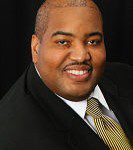In this 4-Part article series, I will explain how a Strategic Life Plan (SLP) differs from traditional goal setting and how to use the plan effectively. This first article will provide insight into how strategic planning began in the corporate sector and has now been tailored for use in personal growth and development. After using strategic planning for years, corporately, to lead various departments to success, I’ve created a model that first served as a guide for my personal successes and has been proven to work effectively for others as well.

Statistics show that 87% of all people dream of success. Of the 87%, only 12% begin working towards it. Of those 12% however, only 1% achieve their aspirations. Based on these statistics alone, your chances of achieving your goals are slim. For every 100 people who read this article, less than 1 will actually make it to their self-defined finished line. I use “self-defined” intentionally because this journey is personal. As you move along your chosen path, you must be careful not to allow anyone to define what success means or looks like for you. Your success has to be defined on your terms. But there is no need to fret because help is on the way.
Have you found yourself thinking how 2011 will be different from 2010? I’m sure those same thoughts flooded your mind when 2010 rolled in. You were consumed with dreams of starting your own business, losing 30 pounds, or taking the vacation of dreams, but a year later, those dreams are no closer than they were 365 days ago. While studies vary, most are consistent in noting that by midyear, more than half of the people who set a New Year’s Resolutions are no longer working toward them. As I have found through personal coaching with clients, making a New Year’s Resolution or setting a goal is simply not enough. There is a key ingredient missing that increases your odds of achieving success.
What is Strategic Planning?
In the early 1920s, Harvard University’s Business School created the first methodology used for strategic planning in private businesses called the Harvard Policy Model. In the 1950s, the focus moved from policy creation to industry growth, sustainability, and long range planning. By the 1960s, most Fortune 500 companies were using strategic planning to proactively plan for company growth. These theories and ideas have now been modified to include Strategic Life Planning which focuses on an individual aligning their life to a personal vision and mission statement to achieve results. In the same vein as a corporate entity would create their strategic plan to outline their course of action for a specified period, your strategic life plan should incorporate goals and action plans that are focused on future achievement, centered in the knowledge of personal growth and achievement, and aligned to your personal vision and mission.
It Starts With A Dream
I remember as a child being encouraged to dream and being told that anything I dreamed could come true. Admittedly, being from Central Florida and having multiple family members who worked for Disney, I spent more time at the Magic Kingdom than most, but those same themes were also echoed in my home. Even today I spend countless hours speaking to my daughters, community organizations, and youth groups about the power of dreaming. The message however, doesn’t end there. As my dad would say, “a dream alone doesn’t cut the mustard, you must have a plan.” And having a plan separates those who succeed from those who don’t. A solid strategic life plan asks the following 5 questions and clearly outlines the expectations of each: who, what, when, where, how, and why?
Create Your Personal Vision and Mission Statement – Step 1
The first step in creating an effective SLP is to write your personal vision and mission statements. Yes, these are two separate statements and the purpose of each is often confused. A vision statement speaks to the future of who you are to become. It describes where you are going and allows you to articulate your dreams. The only limitation is your imagination. A mission statement defines who you are now. It answers the question “why we are?” The mission statement focuses on your present, whereas the vision statement focuses on your future.
Writing a vision and mission statement can be tedious and time-consuming. It requires soul-searching and should take an honest look at where you are and where you aren’t as it provides the framework for strategic planning. There are several great sites that walk you through the process of writing your statements. Search the web for resources or email me directly for assistance.
Once you’ve written your vision and mission statements, you will have completed the first step of the strategic planning process. After all, it’s impossible to set meaningful goals if you haven’t clearly defined where you are going.
In the next article, I will walk through the process of setting SMARTER goals that get results. 2011 is yours for the taking. Begin now to create the framework to live your life purposed by design. To a phenomenally, prosperous new year…
© Copyright 2011 Adrian Freeman


